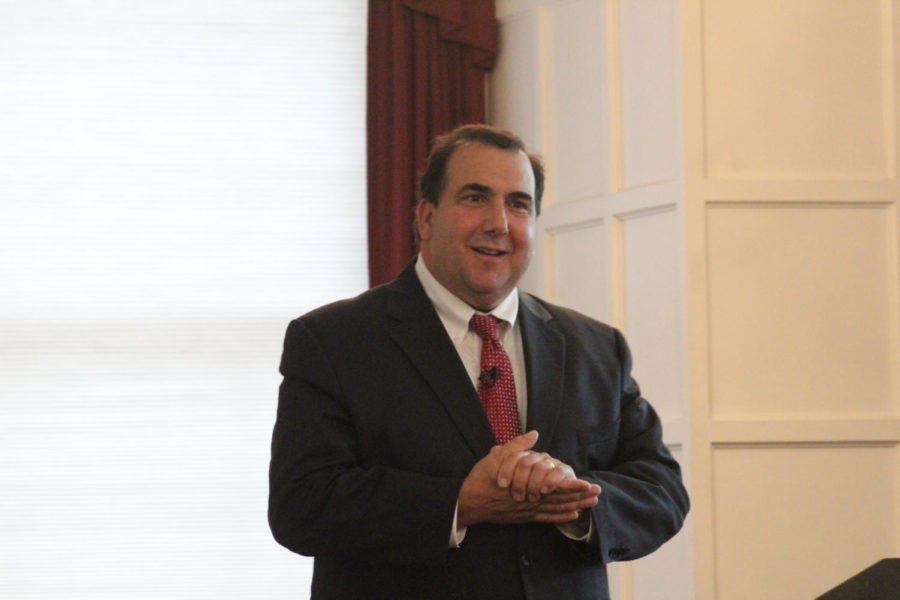Editorial: Get students more involved in the dean search
College of Agriculture and Life Science’s first candidate for Dean Daniel Robison gives his presentation on his plan for Iowa State in the Cardinal Room of the Memorial Union. “I want to be a part of your team,” said Robison.
September 11, 2018
Iowa State is currently conducting two important administrative searches.
The first is to permanently fill the position of dean of the College of Agriculture and Life Sciences (CALS). The position has been occupied by an interim official since Wendy Wintersteen was chosen to be Iowa State’s 16th president.
The second is to find a new dean for the College of Engineering. The incumbent, Sarah Rajala, has announced her intentions to retire at the end of the 2018-2019 academic year. The search committee is currently being selected.
It’s absolutely vital that students are heavily involved in both of these. After all, the dean has control over the vision of their department and is an important resource for students for advice and assistance.
The CALS search has, so far, provided ample opportunity for students to be involved in the process. Two students — one undergraduate and one graduate — sit on the search committee, which has identified three candidates. In addition, the chairs of the search committee conducted a listening session before the search process began, where students, faculty and staff alike weighed in with questions and concerns.
One of the identified candidates visited campus last week and interacted with students during an open forum. The rest of them are scheduled to do the same.
These are excellent first steps in ensuring that students have a voice in the selection process. Other ways to increase transparency would be to provide curricula vitae for each candidate more in advance, as well as tape public interview processes.
The proportion of students on the search committee should also be increased. Student representation is a start, but two students on a committee of 18 can easily be ignored. Increasing the number of students to 25 percent of the committee would be a much better policy to ensure that student voices carry a fair amount of strength and are a significant factor in the search and selection process.
All in all, however, the search process has been quite student friendly. If the engineering search follows this model while aiming to maximize student input, the result will be a well-qualified selection that both students and faculty are satisfied with.
















